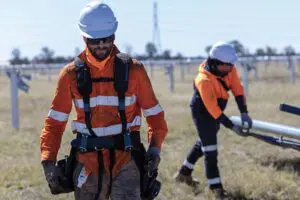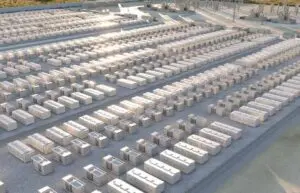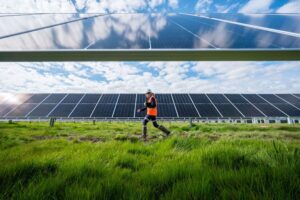It’s hard to find anyone in the energy industry who is actually pleased with the news that the NSW government may pay to keep the country’s biggest coal generator, Eraring, online for another four or five years.
The developers and owners of large scale wind, solar and battery storage projects are not happy, because the extension will crowd out new projects and affect the modelling that justified the investment in facilities already built, and generally send the wrong signal to the rest of the world about the state of its transition.
There is also the question of existing lucrative government contracts with new facilities such as the 850 MW, 1,680 MWh Waratah Super Battery, the single biggest unit to be connected to Australia’s main grid.
What’s the point, the industry might wonder, of having a contract for the “world’s biggest shock absorber” to allow transmission lines to operate at full capacity, when the 2.88 GW Eraring power station is still chugging away in the midst of the country’s major load centres.
Environmentalists are against it, for climate and local health reasons, and many in the local community are concerned about the pollution and the impact of the plant’s burgeoning ash dam.
And it also turns out that the coal industry doesn’t like it either.
Delta Electricity, the company that owns the Vales Point coal fired generator, also on the central coast of NSW, recently pushed back the closure date of its 1.32 GW plant by four years to 2033, presumably because it thought the absence of Eraring might create more opportunities to make money out of the wholesale market.
Those hopes would be dashed if Eraring, as speculated, delayed its closure date from August 2025 to either 2029 or 2030, with the support of a generous subsidy from the state government.
The new owners of Vales Point, the Czech-based Sev.en, told The Australian this week that the Eraring extension could cut its output by nearly 10 per cent and threaten its viability.
It’s particularly appalled at the idea that Eraring would be paid by the government – some estimates put it at $150 million a year, or even up to $400 million – to keep it open.
That’s the result of bad management, it says, but the reality is probably that Eraring owner Origin Energy has been quite clever in its approach.
As we wrote earlier this week, Origin was faced with big costs to keep Eraring open, and likely chose to announce an earlier proposed closure knowing that any extension would then be funded by government. And Origin hasn’t bothered to do much to fill the gap with new wind, solar or storage by August, 2025.
There are not a lot of privately owned coal generators in Australia – one in WA, three in Victoria and four in NSW – and those not privy to the secretive contracts afforded to some, such as the Yallourn brown coal generator in Victoria, are unhappy about missing out on the government largesse.
And so they might be. The details should at least be made public. EnergyAustralia, the owner of Yallourn, is looking for government support to keep its Mt Piper coal plant near Lithgow open on “reserve basis”, ostensibly to be switched on in summer only until a closure date perhaps in the mid 2030s.
But it needs government support to do it, because such use is not the way the economics of coal fired power was designed.
But is Eraring needed, even despite Origin’s lack of effort to fill the gap? (It has recently rolled out a pipeline of big wind, solar and storage projects, but none will be finished before the end of August, 2025).
As Johanna Bowyer from IEEFA writes today, neither Origin nor the state government has shown any proof that the extension is warranted.
She notes that the Australian Energy Market Operator’s most recent published assessment – released in late December – forecast no reliability breaches if the measures put in place to contract new renewables and storage capacity under a series of state-led auctions delivered as planned.
AEMO suggested delays could risk a potential breach for the summer of 2025/26, but that gap could be filled with one or two units from Eraring staying online, which many in the industry expected could be the result of negotiations, not a four year extension for all four 720 MW units.
Clearly, the NSW government remains skittish. It faces an election in early 2027, and it is loathe to run the risk of shortages and price spikes. But how much, if anything, should consumers pay for their political comfort?
And members of the local community are also not happy. One activist, Gary Blaschke, is a long term resident of nearby Lake Munmorah, where another coal fired power station once stood and where the Waratah Super battery is now being built.
He has long campaigned on the issue of Origin’s coal ash dam, and says a decision to extend its operations by another four or five years would amount to “criminal neglect.” He sits on the Eraring community consultative committee, is co-founder of a new group called Future Sooner, and has been a member of the coal ash community alliance.
He points out the state treasurer Daniel Mookhey, who would sign off on any government subsidy, chaired the NSW parliament’s coal ash inquiry in 2021 which found little evidence had been provided on the health impact of coal ash dams on local communities.
“We have met with two regional Public Health Units, NSW EPA, NSW Health and NSW Planning on four separate occasions to put forward the government’s own information, and have not heard a peep from any department for close to two years on the sixteen recommendations from their inquiry,” Blaschke says.
“To allow Eraring or any other coal burning power station to extend their used by date may be satisfying their political mates or simply getting the government out of the hole that they and the industry dug for themselves or had not seen coming.
“Yet it does not help those local residents any reprieve from pollutants that potentially have created cancer and respiratory rates well above NSW and Australian averages.”










